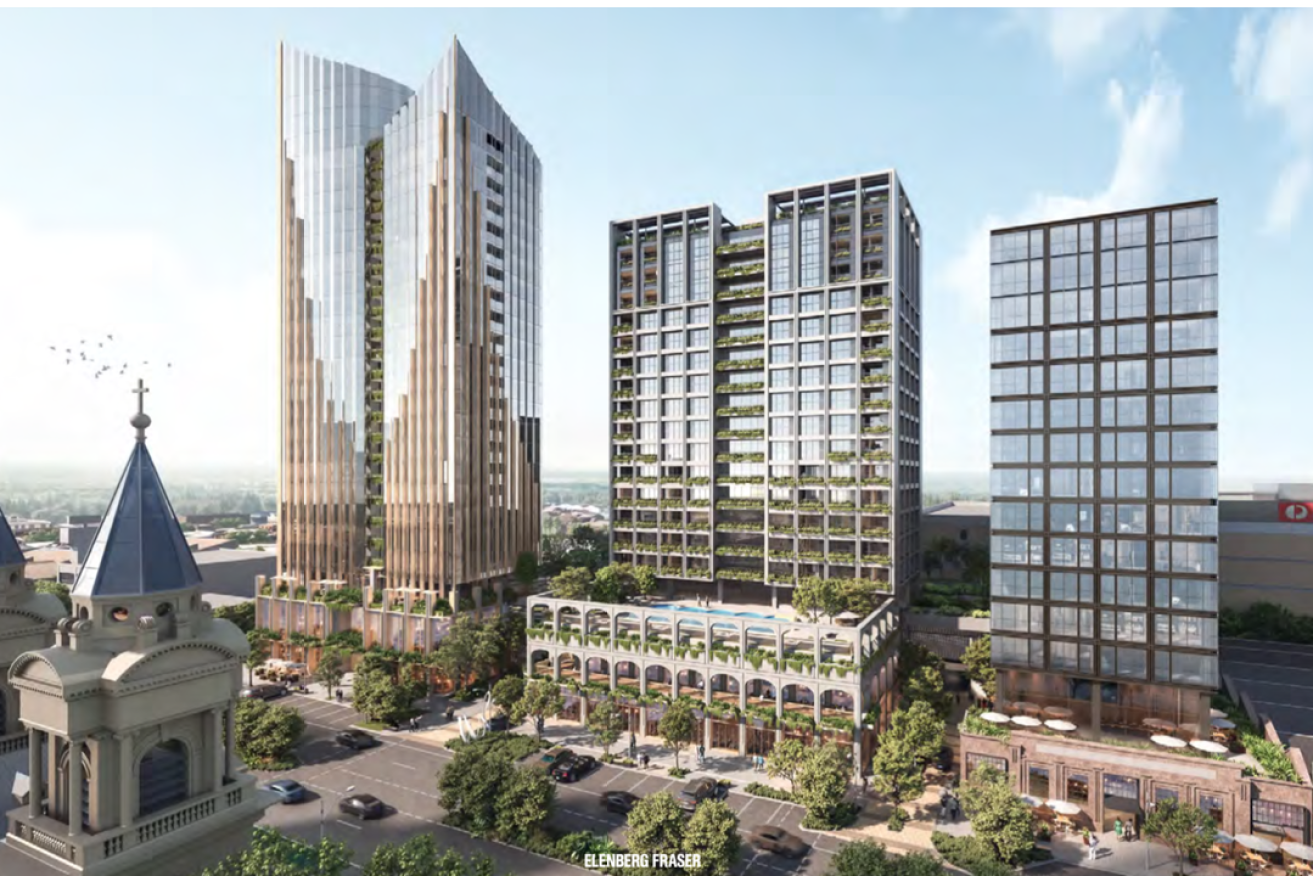The CBD is an outdated notion. Let’s embrace the ‘CLD’
We need to shake off our concept of a central business district and instead embrace a central living district, writes Jamie McClurg.


Image: Elenberg Fraser and Gurner Pty Ltd supplied
The $1.25 billion proposal by Melbourne’s Gurner Group to transform an empty car park in Adelaide’s west end into a thriving apartment, hospitality and commercial hub is ambitious.
The project, reported by InDaily and approved by the State Assessment Commission Panel in November, features 600 apartments, offices, shops, bars, an outdoor plaza and five towers of up to 28 storeys on Grote Street, in a precinct that is ripe for revitalisation.
The size and scale of the project will no doubt get some backs up. But it’s exactly the kind of project and vision we need to shake off our outdated notion of a CBD and instead embrace a CLD – a central living district.
There is no doubt that post-COVID behaviour changes have impacted our CBDs. Businesses are adopting de-centralised models, more people are working from home and retailers are struggling to adapt to lower levels of foot traffic.
This behaviour is translating into how CBDs are being commercially utilised. Australia’s office vacancy rates have reached levels not seen since the 1990s, while the vacancy rate for prime office space in Adelaide’s CBD has now reached 18.4%, the highest level recorded since 1993.
But the COVID-centric argument misses the point. Another kind of exodus has been going on for generations.
Go back to 1920, and the City of Adelaide was home to 43,164 people. Now that number is a mere 26,100.
That there are 17,000 fewer residents in the CBD today than a century ago is a stark reminder of how we have hollowed out our city’s urban form.
So, whilst Australia’s population has grown by 378 per cent, the City of Adelaide’s has declined by 40 per cent.
In the post-war boom, the rush to create a sprawling, suburban idyll sucked people out of the centre and created a seemingly endless centrifugal expansion.
This would be OK if our population growth had supported this ongoing expansion. But it hasn’t. Adelaide is sub-scale as a city, and this causes problems with fixed network infrastructure. More costs have to be amortised across fewer people, and servicing our outer suburbs is becoming increasingly harder the further we go.
This is not an Adelaide-only issue.
I regularly travel to our operations in Melbourne and there isn’t one person in our office who doesn’t already commute two or three hours a day. One can only imagine what it will be like by 2030 when it is forecast to overtake Sydney as Australia’s most populous city.
In Adelaide, we should be creating a central living district – a place of vibrancy, community and connectivity that creates a 24/7 economic and social ecosystem. And crucially, the centre of our city should also be about affordability.
Creating a critical mass of high-density affordable housing will be absolutely fundamental in achieving our goals as a state. It also makes economic sense – as noted in the State Government’s discussion paper for the Greater Adelaide Regional Plan – the per-dwelling cost for land development of high-density CBD living is a fraction of what it is for low-density greenfield development in our outer suburbs.
The merger of the University of Adelaide and UniSA is predicted to draw an additional 6,000 international students a year to our city by 2034, and we have to throw everything at keeping them here after they’ve graduated. This includes capitalising on the immediate land opportunities the university merger will likely create for affordable housing outcomes and accelerating the outcomes promised by the state government’s Flinders Street bus station project – among others.
We can’t let good sites go to waste, languishing and delaying the opportunity to populate our CLD. Only by pulling every lever can we hope to hit the two million population mark that South Australia needs to forge a truly prosperous future.
It’s time for people to reclaim the CBD. Bring on the CLD instead.
Jamie McClurg is Executive Chairman of Commercial & General




